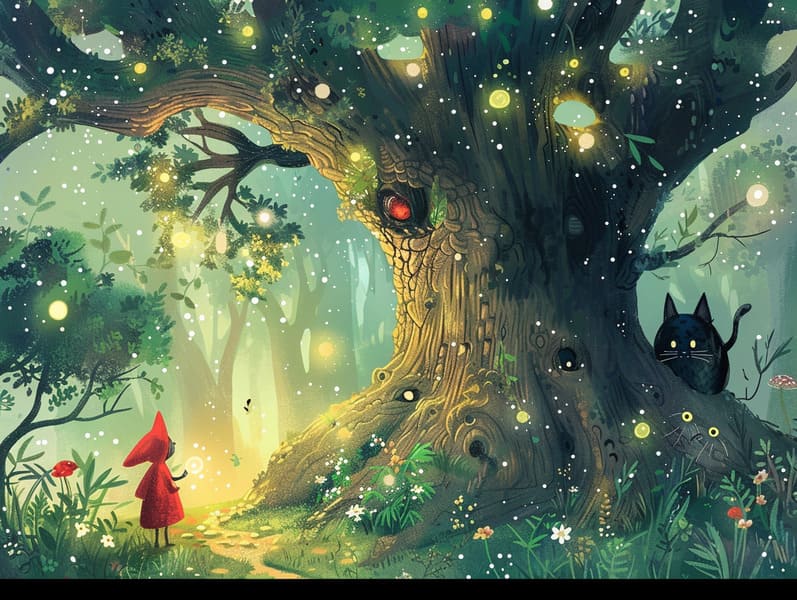The Formation of Classic Fairy Tales and the Perpetual Appeal.
The Formation of Classic Fairy Tales and the Perpetual Appeal.
Blog Article

Famous fairy tales have deep roots. These tales have been narrated from one generation to the next centuries before they were ever written down. They originated from a variety of societies, including Indigenous traditions. They were initially narrated among elders, often carrying themes and messages reflective of the societal norms and beliefs of the time.
The famous Grimm duo, Jacob and Wilhelm (the Grimm brothers), were among the first to assemble many of these beloved stories. Their published works, "Grimm's Story Collection," included narratives like "Cinderella," "The Story of Hansel and Gretel," and "Snow White," which have since become essentials in the world of beloved fairy tales. Similarly, the Danish author's fanciful stories, such as "The Mermaid's Tale," and "The Duckling's Story," have gained the love worldwide, guaranteeing their place in the pantheon of iconic fairy tales.
Though they are centuries old, fairy tales remain as impactful as ever, especially as kids' bedtime tales. These delightful tales are now available in diverse formats, including richly illustrated books, captivating animations, and internet fairy tales.
Their continued relevance can be attributed to several delightful features:
Important Morals: Classic fairy tales often impart important moral lessons. Narratives like "The Shepherd Boy and the Wolf" teach the importance of integrity, while "The Hare and the Tortoise" emphasize the virtues of persistence and unpretentiousness. These stories offer young ones clear distinctions between truth and falsehood, building their moral compass in a kind yet deep way.
Sympathy and Perception: Timeless fairy tales frequently depict beings facing trials and tribulations, stimulating listeners to sympathize with their struggles and cheer for their triumphs. For instance, "Beauty's Beast" emphasizes the virtue of looking past the exterior to comprehend the real person of a individual, fostering sympathy and recognition.
Cultural Awareness: Many timeless fairy tales are steeped in the cultural contexts from which they developed. Reading these narratives can provide enlightening views into different ways of life, fostering a sense of world appreciation and understanding.
Fantasy and Imagination: The supernatural elements in fairy tales—magical spells—provoke children’s creativity. These stories carry readers to fantasy realms, triggering inventive dreams and a sense of wonder that endures a lifetime.
Old fairy tales are not only captivating but also educational. They act as bewitching tools in advancing various mind and heart abilities in little ones. When fairy tales are read aloud, they nurture language skills by presenting new language and complicated sentence structures. This practice also develops listening skills and mental focus, as the young follow the story, prepared to see what happens next.
Furthermore, talking about the themes and characters of ancient fairy tales can cultivate reasoning skills and thought processes. The young are led to spot patterns, anticipate outcomes, and know cause and effect. These examinations also encourage little ones utter their thoughts and feelings, cultivating their emotional intelligence.
In today’s technological age, the prevalence of digital storybooks has made these tales more reachable than ever. Web platforms and digital apps supply large libraries of popular fairy tales that can be explored or heard anytime, anywhere. Fairy tales spoken are particularly in demand, supplying an interactive way for the young to experience these fantastical tales. Read-aloud stories and spoken videos move characters and settings to life, often enhanced by charming harmonies and instrumentals that improve the narrative experience.
The lasting appeal of old fairy tales lies in their ability to change to modern times while keeping their key morals. Contemporary revisions of these stories often include more diverse characters and modern settings, making them relevant to today’s audience. However, the main ideas of daring, goodness, and impartiality remain unchanged, continuing to influence audiences of all ages.
Old fairy tales also offer a sense of ease and comprehensibility. They confer upon a methodical narrative with a unmistakable beginning, middle, and end, get more info often coming to a close with the resolution of conflicts and the triumph of goodness over badness. This foreseeability can be consoling for little ones, providing a sense of dependability in an always shifting world.
Timeless fairy tales continue to entrance and train new generations, maintaining their allure and pertinence in modern society. As nighttime stories for kids, they extend a perfect blend of fascination and comprehension, cultivating moral values, empathy, and creativity. The presence of web-based fairy tales and the well-received status of fairy tales recited promise that these ancient stories remain within reach to new generations.
By protecting and imparting these tales, we continue to recognize the rich tapestry of folklore and cultural heritage. Whether you are accessing a colorful picture book, accessing a internet collection, or listening on an read-aloud book, the allure of Grimm's fairy tales is always within reach. These fairy tales illustrate of the ageless effect of tales and its ability to join us across eras and regions.
Be it you are reading a richly illustrated book, discovering a electronic collection, or listening through an narrated book, the appeal of old fairy tales is always within reach.
These stories teach us of the unwavering spell of stories and its ability to bring us together across centuries and lands, forging a link that captivates and teaches alike.